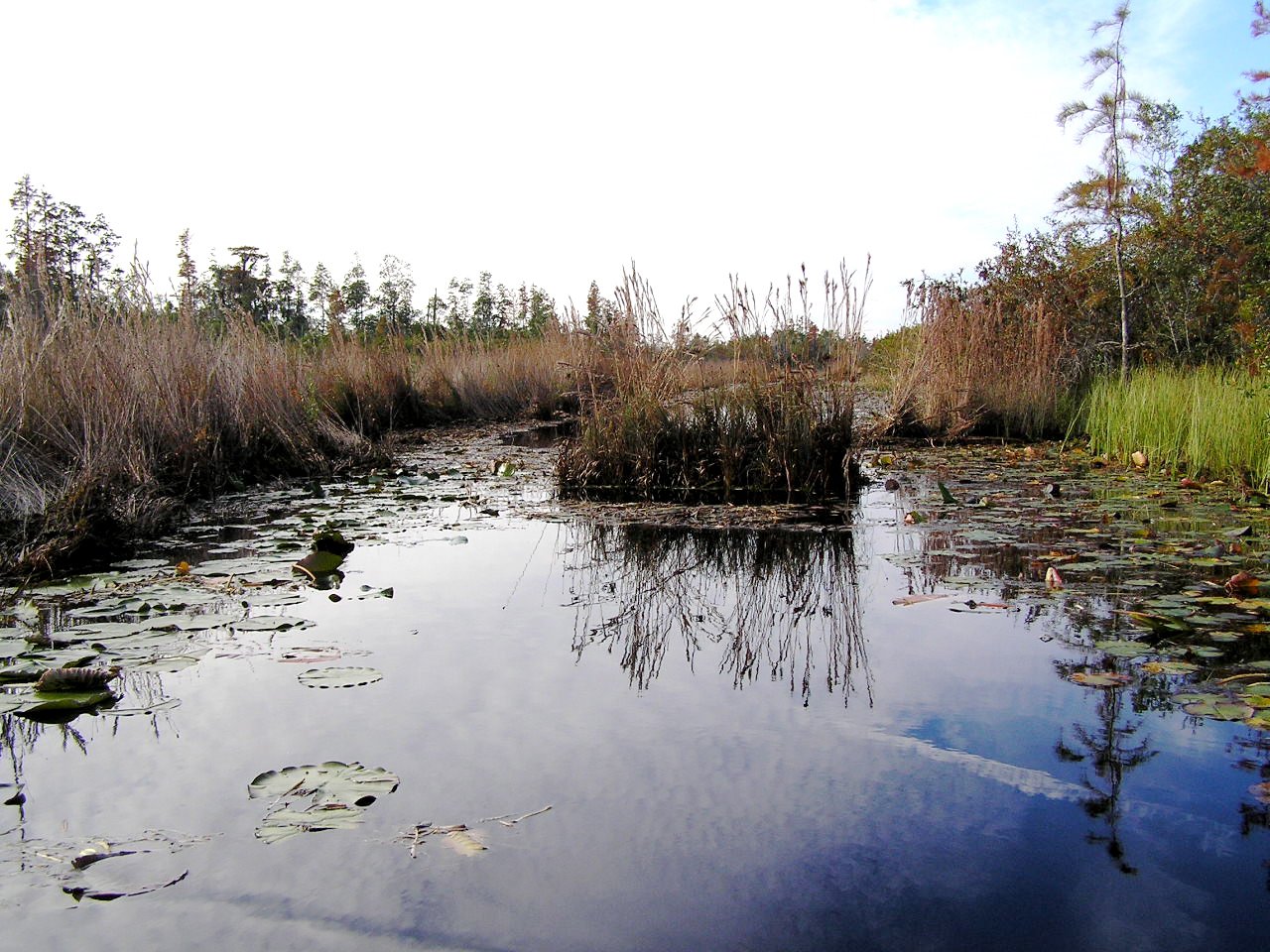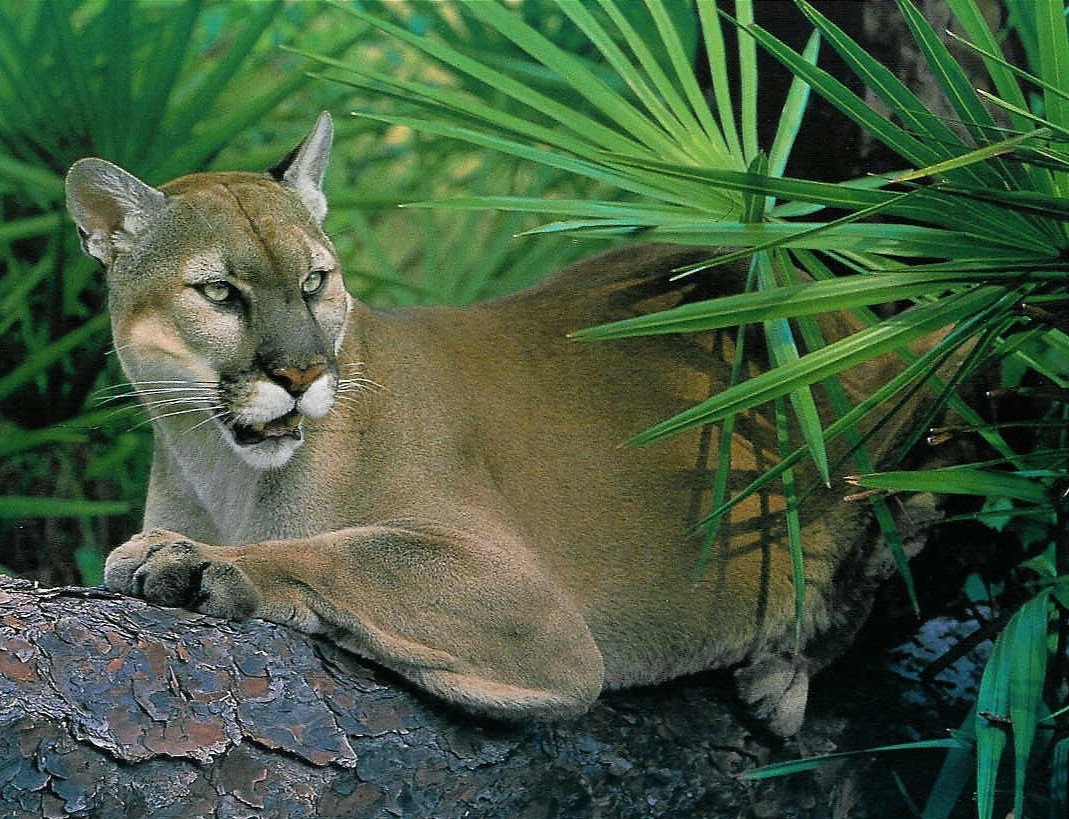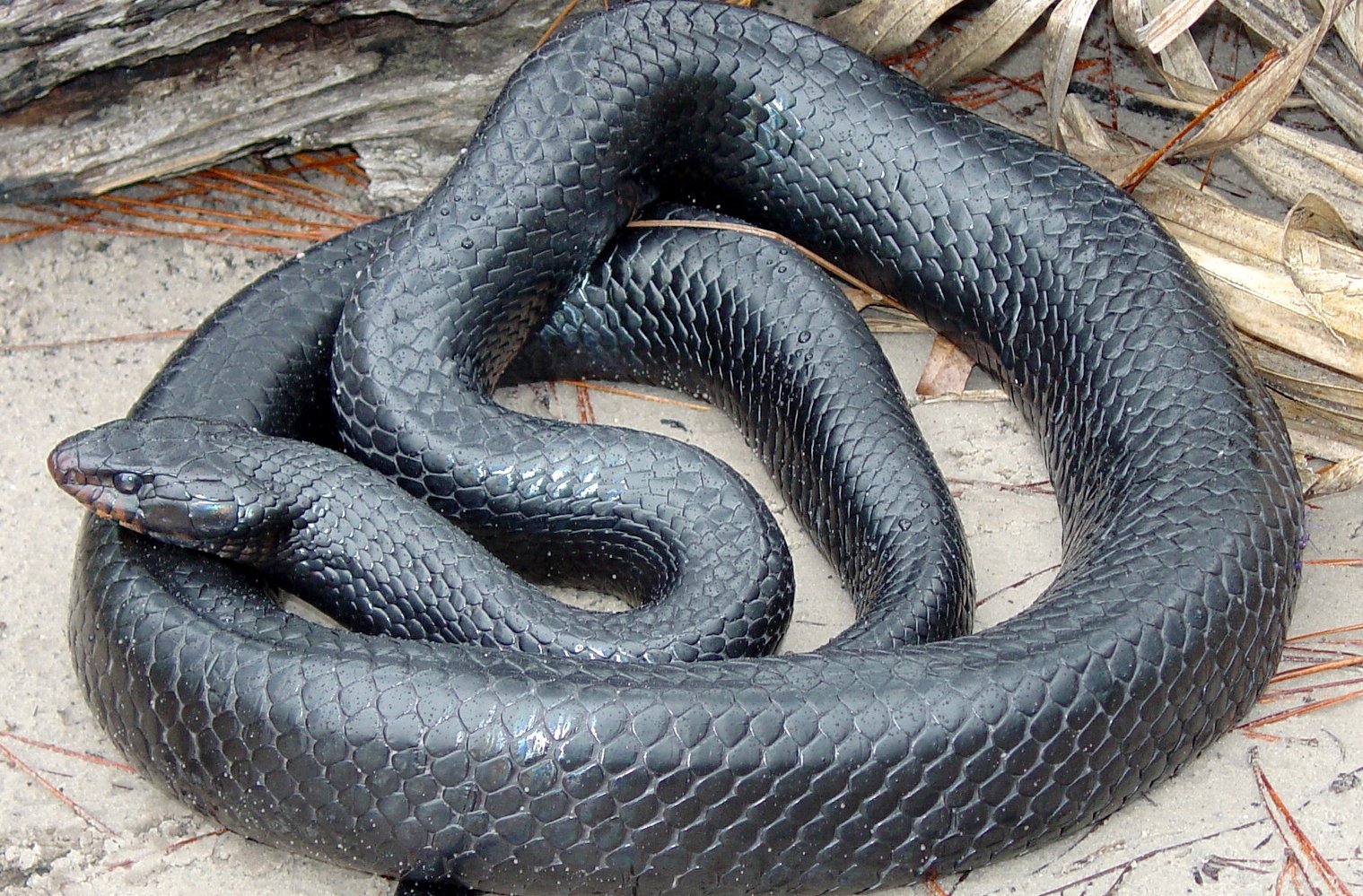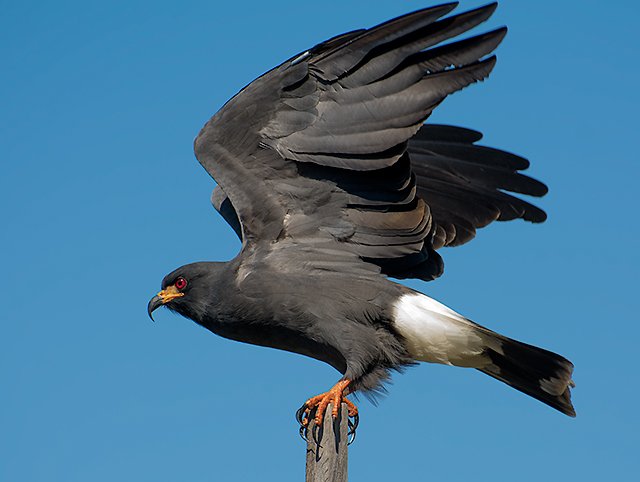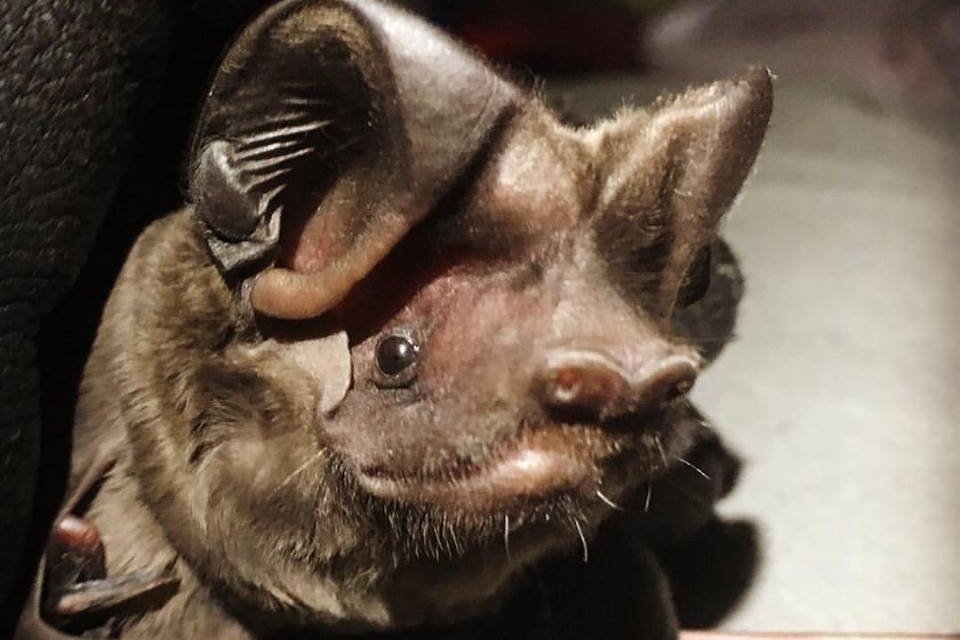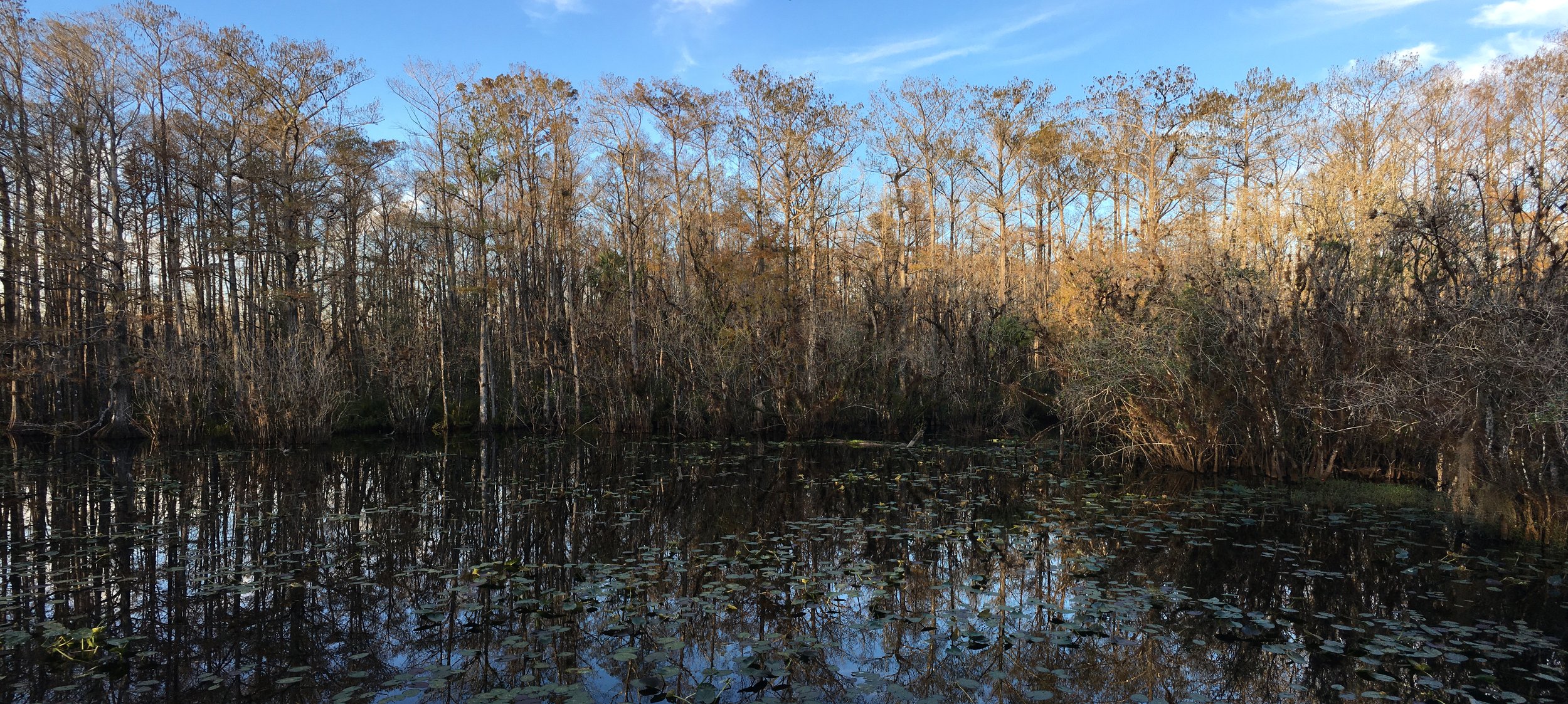
Freshwater Slough
Florida's freshwater sloughs (pronounced “sloo”) are unique and important ecosystems found within the state's wetlands and Everglades region. A slough is a slow-moving, often shallow, and seasonally flooded waterway that plays a critical role in maintaining the overall balance of the wetland ecosystem.
Freshwater sloughs are characterized by their water flow patterns. They typically have slow-moving water, with occasional periods of more rapid flow during the wet season. These waterways act as natural drainage systems for excess rainwater, helping to prevent flooding in the surrounding areas. They are often fed by the overflow of water from surrounding wetlands, lakes, and rivers. Rainfall contributes to the water level, and during the wet season, water levels can rise significantly, creating interconnected networks of channels.
The vegetation within freshwater sloughs is diverse and adapted to fluctuating water levels. This includes aquatic plants like water lilies, cattails, pickerelweed, and submerged vegetation. Emergent plants, which grow partially submerged and partially above the water's surface, are also common. They provide important habitat for a wide range of wildlife species. They support various fish species, amphibians, reptiles, and insects. Many wading birds and waterfowl also depend on these habitats for feeding and nesting. The diversity of plant life, aquatic creatures, and birds within freshwater sloughs contributes to the overall ecological health of the Everglades ecosystem. These habitats play a role in filtering water, providing food and shelter for wildlife, and maintaining the delicate balance of the ecosystem.
Freshwater sloughs, like many other wetland habitats, face threats from human activities such as urban development, drainage projects, and alterations to natural water flow patterns. These disturbances can lead to habitat degradation, loss of biodiversity, and disruption of important ecological processes. Conservation efforts often focus on restoring and protecting the natural hydrology of the Everglades to ensure the health and sustainability of freshwater slough habitats.
Vegetation
The vegetation in freshwater slough habitats is diverse and well-adapted to the unique hydrological conditions of these ecosystems. The plant species found in these habitats play a crucial role in maintaining the health and functionality of the entire ecosystem.
Emergent Plants
Emergent plants are those that grow partially submerged in water, with their upper portions extending above the water's surface. These plants are adapted to tolerate fluctuating water levels and provide important habitat and food sources for various wildlife. Common emergent plants found in freshwater sloughs include:
Sawgrass (Cladium jamaicense): One of the iconic plants of Florida's freshwater sloughs, sawgrass has sharp-edged leaves and is well-suited to the fluctuating water levels. It forms dense stands and provides shelter for small animals and nesting sites for birds.
Cattails (Typha spp.): Cattails are recognized by their brown, cigar-shaped flower heads. They often grow in dense stands along the edges of water bodies and create valuable habitat for birds, insects, and small mammals.
Pickerelweed (Pontederia cordata): This plant produces spikes of blue to purple flowers and grows in shallow waters. It provides cover and forage for various aquatic creatures.
Bulrushes (Schoenoplectus spp. and Scirpus spp.): Bulrushes are tall, grass-like plants that often form dense stands in shallow water areas. They have cylindrical stems and provide cover and nesting sites for birds and other wildlife.
Arrowhead (Sagittaria spp.): Arrowhead plants have arrow-shaped leaves and produce white or yellow flowers. They grow in the shallow edges of water bodies and provide habitat for various aquatic creatures.
Aquatic Plants
Aquatic plants grow entirely underwater and often play a role in oxygenating the water and providing habitat for aquatic organisms. These plants help maintain water quality and contribute to the overall health of the ecosystem. Examples of aquatic plants in freshwater sloughs include:
Water Lilies (Nymphaea spp.): Water lilies have large floating leaves and showy flowers that come in various colors. They create sheltered areas for fish and other aquatic life.
Vallisneria (Vallisneria spp.): Also known as eelgrass or tape grass, Vallisneria is a submerged plant that provides food and cover for aquatic species.
Wild Celery (Vallisneria americana): Wild celery is a submerged plant with long ribbon-like leaves. It plays a crucial role in providing habitat for aquatic species and helps improve water quality.
Water Pennywort (Hydrocotyle spp.): Water pennywort has round leaves and grows at the water's edge or in shallow water areas. It provides cover and food for aquatic insects and small animals.
Fanwort (Cabomba caroliniana): Fanwort is a rooted aquatic plant with finely dissected leaves that resemble fans. It forms dense underwater colonies and provides habitat for fish and invertebrates.
Floating Plants
Floating plants grow on the water's surface, creating a canopy that provides shade and refuge for aquatic life beneath. They also play a role in reducing sunlight penetration and regulating water temperature. Examples include:
Duckweed (Lemna spp.): Duckweed consists of tiny floating plants that form a green layer on the water's surface. It provides cover and food for aquatic insects and small animals.
Water Lettuce (Pistia stratiotes): Water lettuce forms rosettes of light green leaves that float on the water's surface. It can grow in dense mats and provides cover for small aquatic organisms.
Water Fern (Salvinia spp.): Water ferns have small, floating leaves that form intricate patterns on the water's surface. They create shelter for aquatic animals and help shade the water.
Watermeal (Wolffia spp.): Watermeal consists of the smallest floating plants and appears as tiny green dots on the water's surface. It's an important part of the aquatic food chain.
Fairy Moss (Azolla filiculoides): Fairy moss is a small, free-floating plant that resembles a moss. It provides cover and habitat for aquatic invertebrates.
Water Hyssop (Bacopa monnieri): Water hyssop has small leaves and often floats just below the water's surface. It's an aquatic herb that provides cover for aquatic animals.
Water Shield (Brasenia schreberi): Water shield has floating leaves with a unique shield-like appearance. It produces pink or purple flowers and provides habitat for aquatic insects.
Water Hyacinth (Eichhornia crassipes): An invasive species in some areas, water hyacinth has beautiful purple flowers and forms dense mats on the water's surface. It can negatively impact native plant and animal communities if not managed.
Endangered Species Living in Freshwater Sloughs
Florida Panther
Red-cockaded Woodpecker
Wood Stork
Cape Sable Seaside Sparrow
Eastern Indigo Snake
Everglade Snail Kite
American Crocodile
Florida Bonneted Bat


